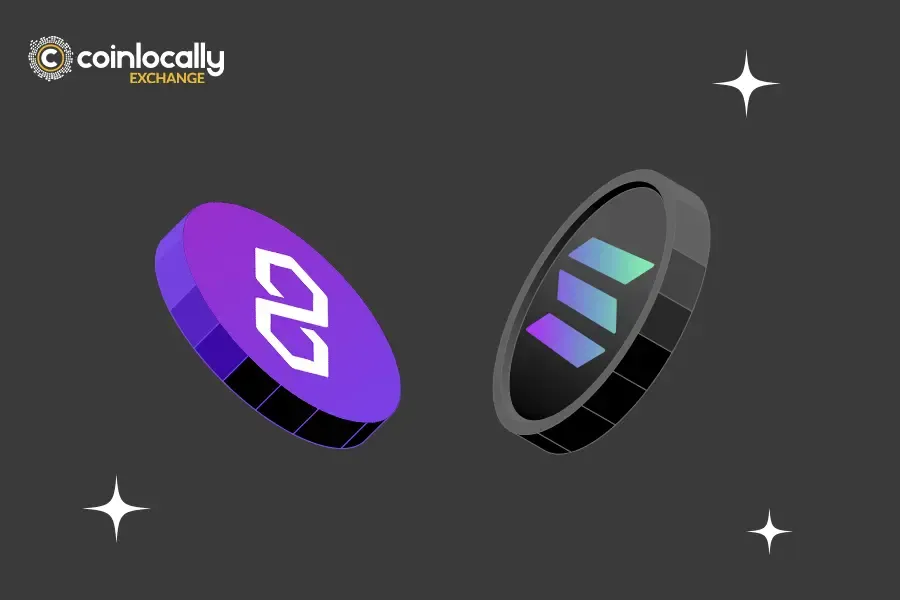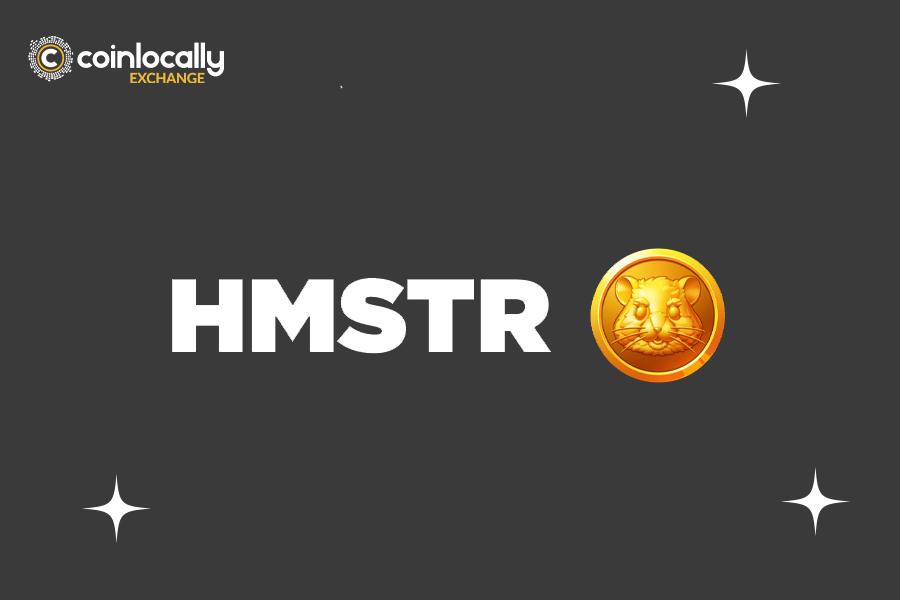Intro
To choose between familiar crypto names like Solana and Polygon (Matic), we first need to check their similarities and differences, compare Solana vs. Polygon, and learn about each. So, let’s go through these crypto projects and see which one is the better choice.
What Is Solana?
Founded in 2017, Solana is a layer one chain that offers the foundational structure of a blockchain network, which other (layer 2) networks can build on.
It became one of the fast-growing blockchains for building smart contacts and scalable applications, and it has gained a reputation for its speed and efficiency.
Learn More: What Is the Next Cryptocurrency to Explode in 2025?
Solana Top Features
- Solana is a fast, secure, and censorship-resistant network.
- It owns its native token SOL, which is the #4th largest cryptocurrency by market cap and provides a means of transferring value and blockchain security through staking.
- Regarding its consensus mechanism, Solana integrates two algorithms, Proof-of-Stake (PoS) and Proof-of-History (PoH), to provide speedy transactions.
- Solana implements several technologies to run multiple smart contracts simultaneously, which saves time and makes it a cost-effective blockchain network.
To be able to compare Solana vs. Polygon (Matic), we should learn about Polygon and its special features.
What Is Matic?
Polygon is a cryptocurrency and blockchain scaling platform formerly known as Matic, which changed its name in February 2021.
Matic came into play to tackle Ethereum’s scalability issue thanks to the various features and services it provides.
Matic (Polygon) Top Features
- Supporting more than 7000 decentralized applications (DApps), Matic thrives on offering faster transactions and lower costs than Ethereum.
- MATIC is Polygon’s native cryptocurrency token, holding the #84th position based on market cap among all the crypto projects.
- It uses a Proof-of-Stake consensus mechanism where network participants can stake MATIC tokens to validate transactions and vote on network upgrades.
Now that we know the basics let’s start comparing Solana vs. Polygon (Matic) to find out which one can be a better option.
Solana vs. Polygon (Matic): Price History
To start things off, let’s draw a clear picture of each token’s price history and then compare Solana vs. Polygon (Matic).
Polygon Price History
- Polygon’s native token, MATIC, is currently ranked #84 by market cap.
- The initial trade with MATIC occurred on Apr 27, 2019, at $0.0043.
- After recording its lowest value on May 10, 2019, at $0.003144, the token has experienced significant ups and downs for about two years.
- It saw its first peak after ATL in May 2021, and its value went from $0.038 to $2.30.
- After some fluctuations, MATIC touched its highest value on Dec 27, 2021, at $2.92.
- Since then, the MATIC token has had a general downtrend and today, on Nov 19, 2024, each MATIC is traded at about $0.4397, with a circulation supply of 2,339,477,225 coins and a total supply of 10,000,000,000 MATIC.
Solana Price History
- Solana’s native token, SOL, is currently the 4th largest cryptocurrency by market cap.
- The token was launched on Apr 11, 2020, with a price of $0.91.
- A month after its launch, the token fell to its lowest trading price of $0.5008 on May 11, 2020.
- It remained in the same price range for about a year but experienced its first peaks in February 2021 and reached $49.66 on May 2, 2021.
- It continued the uptrend and reached $178.32 on Sep 11, 2021.
- The SOL token recorded its highest price level of $259.96 6.5% on Nov 06, 2021.
- Since its ATH, the token went on a downtrend and even reached a low price of $9.77 on Dec 29, 2022.
- However, it recovered and started an upward trend and reached $58.44 on Nov 19, 2023.
- The uptrend continued into 2024 and each SOL token reached a trading price of $202.52 on Mar 18, 2024.
- Today, on Nov 19, 2024, each SOL token is traded at about $243.36, with a circulating supply of 474,567,928 SOL coins and a live market cap of $115,530,324,830 coins.
Other important financial markers that help us compare Solana vs. Polygon and see their investment potential are ROI, ATH, and ATL.
Learn More: What Is a Fully Diluted Market Cap? How Can I Use It In Crypto Investing?
Solana vs Polygon (Matic): ROI
SOL token’s annual Return on Investment (ROI) is +298.72%, meaning that your $100 investment in Solana could give you about $300 in a year.
MATIC token’s annual ROI is -48.23%, meaning that if you invested $100 in MATIC tokens last year, you would lose about $50.
Solana vs Polygon (Matic): ATH and ATL
In cryptocurrency and blockchain, ATH happens when the token reaches its highest price and records a new hit. In contrast, we use ATL when the token’s value drops to its lowest level.
- Looking at Solana’s price chart, we can see the token touched its lowest value on May 11, 2020, at $0.50, and about one year later, on Nov 06, 2021, it reached its ATH at $259.
- MATIC token financial data indicates that the token recorded its lowest value on May 10, 2019, at $0.00314376. It also recorded its ATH on Dec 27, 2021, when each MATIC was worth about $2.92.
Another essential area for comparing Solana vs. Polygon is their fundamental features, including consensus mechanism, transaction speed, fees, and architecture.
Solana vs Polygon (Matic): Consensus Mechanism
Consensus mechanism refers to mathematical and computational algorithms by which a group of nodes on a network determine which transactions are valid and eligible to be recorded on the blockchain.
- Solana blockchain is based on two consensus mechanisms, Proof-of-Stake and Proof-of-History. Solana combines Proof-of-History (PoH) with Tower Byzantine Fault Tolerance (Tower BFT). This security system allows users to stake tokens and vote on the validity of a PoH hash.
- Moving to the Polygon blockchain, the network is run by a Proof-of-Stake model, which is the exact mechanism used in many other networks like Ethereum 2.0.
Solana vs Polygon (Matic): Transaction Speed
- Solana blockchain can handle over 50000 transactions per second.
- The Polygon network can process 65,000 transactions per second, with the ability to scale even further in the future.
Learn More: The 10 Most Scalable Blockchains With The Fastest Transaction
Solana vs Polygon (Matic): Transactions Fees
One of the vital factors that make Solana the biggest competitor for other networks, like Ethereum, is its incredibly low transaction fees, charging just $0.00025 per transaction, while Polygon network’s average cost per transaction is way higher, about $.04.
Solana vs Polygon (Matic): NFT
NFT (Non-Fungileb Token) is a cryptographic asset based on blockchain technology. Solana and Polygon (Matic) are integrated with OpenSea, the largest NFT marketplace.
However, Solana was ahead of Matic since it has offered NFT minting since January 2021, with 5 million NFTs on the platform by today, Dec 11, 2022.
Although Polygon started its journey in NFTs in Aug 2021, a bit later after Solana, it held over $2 million in NFT sales during only one month in December 2021.
Learn More: The Best NFT Marketplaces in 2024 for Beginners by Fee and Volume
Solana vs Polygon (Matic): Architecture
To find the best choice between Solana vs. Polygon (Matic), we also need to learn about each network’s architecture.
Solana Blockchain Architecture
The most noticeable aspect of the Solana blockchain’s architecture is its design, which allows any node to be a leader or validator.
According to Solana’s whitepaper, “Each Verifier node has the same hardware capabilities as a Leader and can be elected as a Leader”.
This is done through PoS-based elections as the following steps.
- Transaction input is given to the leader.
- The Leader then sequences the messages and orders them efficiently to be processed by other nodes.
- The Leader then executes the transactions in the current state that resides in the RAM.
- Then, he publishes the transactions and signature of the final state to Validators (replication nodes).
- The Validators will execute the same transactions on their copies of the state and publish their signatures of the state if it receives confirmation.
- Published confirmations will then serve as votes for the consensus algorithm.
Polygon Network Architecture
Polygon is a decentralized Ethereum scaling platform made of three layers: Ethereum, Heimdall, and Bor.
Ethereum Layer
The Ethereum layer is the first layer in Polygon architecture, and it features a collection of contracts on the Ethereum blockchain network.
Heimdall Layer (Validator Layer)
The Heimdall Layer is the second entry in the three-layer architecture of the Polygon Network. It is a Polygon Proof-of-Stake Verifier layer which is a fork of Tendermint.
It helps in managing validators and selecting block producers and spans. It also works on managing the state-sync mechanism and monitoring the set of contracts on the Ethereum network.
Bor Layer
Bor is a Block Producer for the Polygon sidechain. The technical functions of this layer include:
- Polygon Chain
- EVM Compatible VM
- Proposers and Producer set selection
- SystemCall
- Fee Model
Solana vs Polygon (Matic): DeFi
In DeFi platforms, TVL is a short form of Total Value Locked, and the larger the TVL in a platform, the more valuable the platform gets, resulting in many benefits for users, including better yields.
Solana has more ‘Total Value Locked’ at $5.5B compared to Polygon, which has $3.8B locked on DeFi applications.
The Key Differences Between Polygon and Solana
The following chart shows a quick snapshot of the comparison between Solana vs. Matic.
| Solana vs. Polygon | Solana | Polygon |
| Mainnet Launch Date | Feb 202 | May 2020 |
| ATH | $259.96 | $2.92 |
| ATL | $0.500801 | $0.00314376 |
| Consensus Mechanism | Proof-of-History and Proof-of-Stake | Proof-of-Stake |
| Market Cap Ranking | #4 | #84 |
| TPS | 50000 (On Average) | Up To 65000 |
| Fee | Starting From $0.00025 | Starting From $0.04 |
| TVL | $5.5B | $3.8B |
Which One Is Better, Polygon Or Solana?
That’s all about Solana vs. Polygon, and now can answer the question: Which of the two projects is better?
Well, Solana and Polygon were going almost neck to neck about two years ago. However, in the recent two years, Solana has kept its position in the market cap rankings (currently #4) but Polygon has fallen from #10 to #84, and price-wise they are not comparable now.
Having said that, we should note that the crypto market is so volatile, and choosing a cryptocurrency for investment depends on many factors, some of which are personal.
So, before making any investment decisions, it’s wise to weigh your options, check your budget, risk tolerance, and trading methods, and consult crypto experts.
FAQ
Below, you can find the answers to the most frequently asked questions about Solana vs. Polygon (Matic).
Is Polygon Cheaper than Solana?
Yes. The price of each MATIC token is about $0.4397, while each SOL is worth about $243.36.
What Competes with Solana?
Solana is one of the major competitors of the Ethereum blockchain. It was developed to enhance scalability and tackle the Ethereum Trilema issue through decentralized applications.
Is Polygon Faster than Solana?
Yes, Polygon is faster than Solana. Polygon is capable of processing 72,000 TPS compared to 65,000 TPS of Solana.



